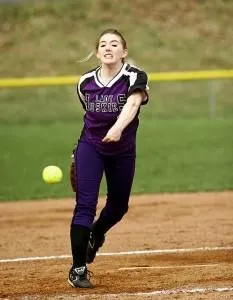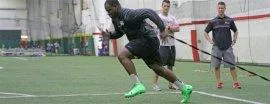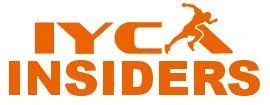How to Build Trust When Training Softball Players
4 Steps to Successfully Training Softball Players by Building Trust
By Susan Wade, M.Ed., CSCS

Over the last few years, I have experienced a higher demand for training softball players in strength and conditioning, especially for pitchers and catchers. This, I believe, is due to the growing popularity of softball and the increased number of overuse injuries. Ever more softball athletes are competing on more travel teams, playing for more than one team at a time, practicing longer and more intensely, and (for pitchers) playing more innings per game.
Typically, coaches are hired for their experience as a “winning” coach, and they tend to focus on skill development. There are, however, a few exceptions. I have encountered a few coaches who incorporate running drills, a few push-ups and sit-ups, and a brief warm up drill, but few possess the knowledge to run a safe and effective conditioning program. However, on the positive side, I am seeing a slight shift towards independent or travel teams seeking to hire expertise in this area.
As a strength and conditioning coach, personal trainer, or high school coach, an important—maybe even the most important—component of sports is to keep our athletes healthy, motivated, and injury free. Over the past twelve years, I have learned that healthy high school athletes have more playing time, continue to grow and excel, and may even earn a scholarship to a college and become college softball players.
However, overuse injuries are on the rise with softball athletes. On a weekend of tournaments, it is not unusual to discover that your athlete pitched four-to-five of the six games played, usually back-to-back and with no rest. Most coaches will support their decision by saying, “There is no stress to the arm in softball.” As a result, the athlete is completely depleted of energy and faces a setback only to face the same regimen the following weekend.
So what can we do as sport performance trainers when we are faced with a fierce battle of over-proportionate playing time, practice schedules, increased volume, and heightened intensity? I will share with you one component that is often overlooked when training softball players
Education is the foundation of success when training softball players
First and foremost, I believe our responsibility as trainers is to educate our athletes, coaches, and parents on many facets of training and overuse injuries. Too often we are caught up in the program of proper exercise progressions, recovery time, hydration, and nutrition. However, there is a key component to training softball players—and any athletes in general—throughout their high school career: It is the need to build lasting and trusting relationships. Once you have earned their trust, they understand to put faith in your expertise. The athlete starts to recognize warning signs when their body is over worked and perhaps will avoid injury. This is the most important part of my job as a strength and conditioning coach. In fact, this component has grown my business immensely over the last several years because of the care I have for each individual athlete. This ensures repeat business, loyalty, and the best advertising, word of mouth. So how does it work?
Step 1: Ask questions of the parent
During my first consult meeting with a prospective athlete, I will ask broad questions to the parents such as:
What are your goals for Taylor?
Where do you see her by the end of this year/next year/end of high school?
What is she lacking, in your opinion?
What are her strengths?
Most parents tend to be all in when it comes to practice regimens and training schedules for their son or daughter. So asking about it provides information about their education or lack thereof. Much of the discovery during this time is current or past injuries and other extra-curricular involvements and commitments, including school workload, academic goals beyond high school, and other “fun” components of their life. In my time training softball players , I am beginning to understand some of the pressures that are on the typical high school athlete.
Step 2: Ask questions of the athlete
It usually takes some time for them to open up and have a dialogue, but I have learned to be an insightful listener and to create a relaxed environment. It is extremely important for the athlete to feel comfortable in order to share insights about themselves. Establishing a trusting environment is critical. Often, I will get opposite goals and ambitions from the athlete. This usually manifests after a few weeks of training. At that point, I will have another discussion with the parents—or the coach.
Step 3: Have a conversation with the coach
This provides an opportunity to discover the current intensity of the sport, additional background of the athlete, and perhaps the coach’s opposition to outside training. This is one component that I strongly suggest to sports trainers. We must work together for the benefit of the athlete. Often, we are on opposite sides from the head coach when it comes to training softball players and other high school athletes, but after having a conversation, I can more fully understand the coach’s philosophies, background, and training experience (or lack thereof). This piece is a huge component of your success. If you want to work with more high school and middle school athletes, the key is to have the coach trust what you are doing! It won’t happen without it. (More on this topic later.)
Step 4: Assess each athlete and individualize their training program
I have learned many assessment tools including the FMS, Top Trainers, Physical Therapists, and Educators. I have taken bits and pieces from all of these areas and compiled my own assessment for throwing athletes. This is the first step in writing a program specifically designed for each athlete. Each athlete has their own program designed for their individual needs and goals, which goes a long way to building additional trust.
When considering training high school athletes, the ability to build relationships is the most important component for your business. For many athletes, you may be the only person they can trust.
You may have heard the saying training athletes is a “people business.” I prefer the saying, “We are in the relationship-building business.” Whether you are training softball players or baseball, hockey, or lacrosse athletes, building athletes begins with building relationships.

High School Strength Coach Certification

Certified Speed & Agility Specialist

Kettlebell Instructor Course

IYCA Insiders - Exclusive Access

Youth Fitness Specialist Certification

Long Term Athlete Development

Youth Nutrition Specialist Certification

Copyright © 2008 - 2025 International Youth Coaching Association. All Rights Reserved
|
|

